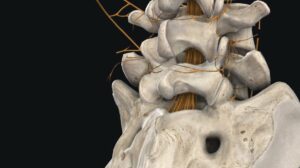NEW YORK (Reuters Health) – Some patients with primary open-angle glaucoma benefit from more frequent visual field testing, according to results of a study published online August 8 in Archives of Ophthalmology.
Dr. Kouros Nouri-Mahdavi and colleagues from the Jules Stein Eye Institute, University of California, Los Angeles report that twice-yearly testing results in earlier detection of glaucoma progression compared with standard once-yearly testing.
However, they do not recommend that a 6-monthly testing schedule be used for all glaucoma patients. “Decision-making regarding exam frequency in glaucoma care should remain an individualized endeavor tailored to the particular needs of each patient,” Dr. Nouri-Mahdavi noted in an email to Reuters Health.
“Detecting rates of progression is particularly important in patients with advanced glaucoma where the remaining functional reserve is smaller…so that clinicians are able to take timely therapeutic action,” he explained.
More frequent testing would also be important in clinical trial settings where the main outcome is functional rates of progression, Dr. Nouri-Mahdavi added.
The study team explored the influence of two different visual field testing frequencies on global and pointwise trend analyses in 381 patients (468 eyes) with primary open-angle glaucoma from the Advanced Glaucoma Intervention Study who were followed for a median of 9 years.
They created a high-frequency data set and a low-frequency data set. The high-frequency data set included all visual field tests performed within the first year of follow up as well as the last available visual field tests. The low-frequency data set was created by deleting every other visual field examination starting at 1 year.
The median number of visual field tests examined was 20 in the high-frequency data set versus 12 in the low-frequency data set.
“We report that a 6-month testing frequency resulted in earlier detection of glaucoma progression compared to a yearly testing frequency especially when global criteria (with mean deviation) were used as the main outcome as opposed to pointwise criteria,” Dr. Nouri-Mahdavi told Reuters Health.
Specifically, progression of glaucoma was 69% more likely to be detected in the high-frequency data set in global trend analysis and 52% more likely in pointwise linear regression analysis.
The hazard ratios for progression (1.69 and 1.52, respectively) are “large enough…for the benefits to be considered worth the extra time and expense required for earlier detection of glaucoma progression, at least in a subset of patients at higher risk of progression,” the researchers conclude.
“In eyes that have established field defects, such as those in our study, earlier detection of glaucoma or significant progression rates is important since it can potentially allow clinicians to treat glaucoma more aggressively in a timely manner than they would have otherwise done,” Dr. Nouri-Mahdavi told Reuters Health.
The authors note in their paper that a study published in 2002 in the British Journal of Ophthalmology found evidence that 3 visual field examinations per year has merit in patients with glaucoma. But this is “cumbersome and is not practical under most clinical circumstances,” Dr. Nouri-Mahdavi and colleagues argue in their paper.
“Our data provide evidence for the advantages of a more practical 6-month schedule for visual field testing” in certain situations, they write. They do say it would be “desirable” to validate these findings in other patient populations.
Arch Ophthalmol 2011.




